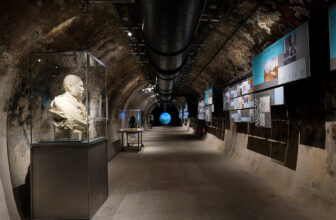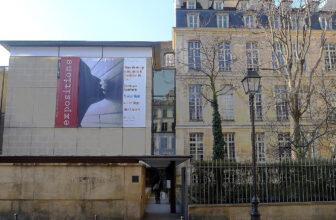
What art is inside the Musee Carnavalet?
The Musée Carnavalet, nestled in the heart of Paris’s historic Marais district, is a veritable treasure trove chronicling the city’s rich and layered history. Dedicated to the story of Paris from its origins to the modern era, this museum is housed in two stunning mansions: the Hôtel Carnavalet and the Hôtel Le Peletier de Saint-Fargeau. Its vast and varied collection includes paintings, sculptures, photographs, furniture, decorative arts, and artifacts that narrate Paris’s evolution as a cultural and political hub. Among these, several works stand out not only for their artistic merit but also for their historical significance. Here are some of the most important pieces and why they hold such a pivotal place in the museum’s collection.
1. Revolutionary Artifacts
The French Revolution is a defining chapter in Paris’s history, and the Musée Carnavalet houses one of the most comprehensive collections of Revolutionary memorabilia. Among these, the famous key to the Bastille, presented to Lafayette by the Parisian municipality after the storming of the fortress in 1789, is particularly symbolic. This artifact encapsulates the moment when the people of Paris rose against tyranny, marking the beginning of monumental political and social change.
Another highlight is the Portrait of Louis XVI and his final testament, written before his execution. These poignant objects offer a glimpse into the personal and political turmoil of the time, making the Revolution’s legacy palpable.
2. Marie Antoinette’s Personal Belongings
The tragic life of Marie Antoinette continues to captivate the imagination of many, and her personal belongings in the Musée Carnavalet provide an intimate connection to her story. Items such as her jewelry, embroidery, and furniture illustrate the opulence of her life at Versailles and stand in stark contrast to her ultimate fate. These artifacts not only showcase exquisite craftsmanship but also serve as powerful reminders of the societal inequalities that fueled revolutionary fervor.
3. The Reconstruction of Proust’s Bedroom
One of the museum’s most unique displays is the reconstruction of Marcel Proust’s bedroom. Proust, the renowned author of “In Search of Lost Time,” spent much of his life confined to this space due to illness. The room, meticulously recreated with his original furniture and personal effects, offers visitors a profound insight into the mind of one of literature’s great geniuses. It is not only a tribute to Proust’s work but also a testament to the intimate relationship between a creator and their environment.
4. Jean-Baptiste-Camille Corot’s Paintings
Corot’s works, including his enchanting depictions of Parisian landscapes, hold a special place in the museum’s collection. Known for his ability to capture the ethereal beauty of nature and urban life, Corot’s paintings reflect the changing face of Paris during the 19th century. His works are both artistically striking and historically valuable, offering a window into the city’s evolving character.
5. Shop Signs and Urban Artifacts
The Musée Carnavalet is famous for its collection of antique shop signs, which are fascinating relics of everyday life in Paris. These intricately crafted signs, ranging from gilded depictions of tools to whimsical animals, provide a glimpse into the commercial and social fabric of the city. They speak to the creativity and resourcefulness of artisans and merchants, bringing to life the bustling streets of Paris from centuries past.
6. Portraits of Prominent Figures
The museum’s vast portrait collection includes depictions of iconic figures who shaped Paris’s history. One standout is the portrait of Voltaire by Nicolas de Largillière. The painting captures the philosopher’s sharp intellect and dynamic personality, embodying the Enlightenment spirit that profoundly influenced Paris and beyond.
Similarly, portraits of revolutionary leaders like Robespierre and Danton provide a visual connection to the architects of change. These artworks are invaluable for understanding the individuals who left indelible marks on the city and its history.
7. Haussmannian Paris
Baron Haussmann’s dramatic transformation of Paris during the mid-19th century is another pivotal chapter captured in the museum’s collection. Architectural models, photographs, and paintings illustrate the sweeping changes that gave rise to the Paris we recognize today, with its grand boulevards, uniform facades, and open spaces. These artifacts not only celebrate Haussmann’s vision but also invite reflection on the social and cultural impact of urban renewal.
8. Medieval and Renaissance Artifacts
While much of the museum focuses on modern Paris, its medieval and Renaissance collections are equally compelling. Stained glass windows, religious artifacts, and intricate manuscripts reveal the city’s spiritual and artistic heritage. Highlights include a 15th-century tapestry depicting scenes of Paris and illuminated manuscripts that offer glimpses into medieval life and beliefs.
9. Decorative Arts and Furniture
The decorative arts collection is a feast for the eyes, showcasing exquisite craftsmanship from various periods. From the gilded rococo salons of the 18th century to the sleek Art Deco designs of the 20th century, these pieces illustrate the evolving tastes and artistic trends of Parisian society. A notable example is the paneling from Madame de Sevigné’s salon, which transports visitors to the intimate world of one of Paris’s most celebrated letter-writers.
10. Photographs of Old Paris
Eugène Atget’s hauntingly beautiful photographs of old Paris are among the museum’s most evocative treasures. Capturing the city’s narrow alleys, bustling markets, and hidden courtyards, Atget’s work preserves a Paris that was rapidly disappearing due to modernization. His images are both nostalgic and documentary, offering a poignant reminder of the city’s ever-changing nature.
Conclusion
The Musée Carnavalet’s collection is a celebration of Paris in all its complexity, a city of revolution and romance, art and intellect, tradition and transformation. Each piece, whether a monumental painting or a humble shop sign, contributes to the rich tapestry of stories that define the City of Light. By exploring these treasures, visitors gain a deeper appreciation not only for Paris’s history but also for its enduring spirit as a beacon of culture and creativity.
Image/wikimedia




